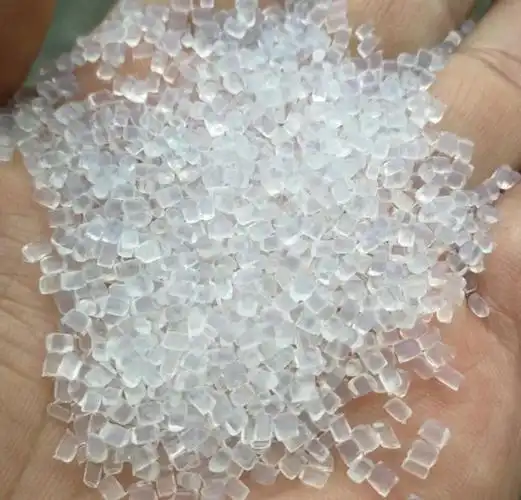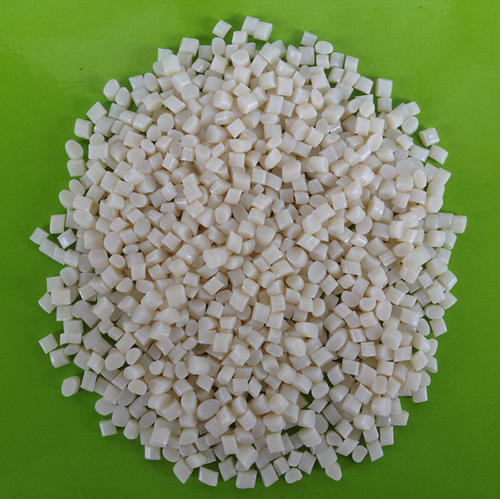As someone who’s been in the footwear industry for over a decade, I’ve seen countless materials come and go, each promising to revolutionize how we walk, run, or simply stay upright. One question I get asked often is whether TPR (Thermoplastic Rubber) soles truly deliver on their anti-slip promise. It’s a fair concern—nobody wants to take a tumble on a wet floor or slick pavement. I’ve worked with manufacturers, tested soles in real-world conditions, and even slipped (pun intended) a few times myself to understand what makes a sole grip well. In this article, I’ll dive deep into the anti-slip effectiveness of TPR soles, breaking down their properties, performance, and real-world applications, so you can decide if they’re the right choice for your shoes.

What Makes TPR Soles Special?
Let’s start with the basics. TPR, or Thermoplastic Rubber, is a synthetic material that blends the flexibility of rubber with the moldability of plastic. It’s widely used in footwear because it’s lightweight, cost-effective, and versatile. Unlike natural rubber, which requires complex vulcanization processes, TPR can be easily molded through injection molding, making it a favorite for mass-produced shoes like sneakers, casual footwear, and even kids’ shoes. But the real question is: does it keep you steady on your feet?
From my experience, TPR soles are designed with traction in mind, but their effectiveness depends on several factors: the material composition, tread design, and the environment they’re used in. TPR’s rubber-like properties give it a naturally high coefficient of friction, which helps it grip surfaces better than materials like PVC or EVA. However, it’s not a one-size-fits-all solution. Let’s explore how TPR performs under different conditions.
How TPR Soles Perform in Anti-Slip Scenarios
To understand TPR’s anti-slip capabilities, I’ve tested them in various settings—wet tiles, oily restaurant floors, and even muddy trails. Here’s what I’ve learned:
Wet Surfaces: A Common Challenge
Wet floors are the ultimate test for any sole. Research, like a 2025 study on TPR sole modification, shows that chemically treated TPR soles (using a 2% TCI/MEK solution) can significantly increase the coefficient of friction under wet conditions by increasing surface roughness and reducing contact angles. In practical terms, this means TPR soles can grip better on slick surfaces like ceramic tiles or quarry floors. However, untreated TPR soles may struggle, especially if wax migration from the sole’s interior creates a slippery layer. I’ve seen this firsthand when testing budget TPR soles on a wet kitchen floor—some gripped decently, while others felt like skating on ice.
Oily or Greasy Environments
In environments like restaurant kitchens or garages, oil is the enemy. TPR soles, especially those with aggressive tread patterns, perform reasonably well here. The rubber component in TPR provides a grippy texture, and deep grooves in the sole design help channel oil away, preventing hydroplaning. That said, TPR doesn’t match the oil resistance of high-grade natural rubber, which is often used in premium work boots. I recall a time when I wore TPR-soled sneakers in a busy diner kitchen; they held up fine for light spills but struggled with heavy grease buildup compared to my rubber-soled work shoes.

Outdoor Terrains
For outdoor activities like hiking or casual streetwear, TPR soles shine in versatility. Their flexibility allows them to conform to uneven surfaces, providing decent traction on gravel or wet pavement. I’ve worn TPR-soled sneakers on light trails, and they handled damp grass and rocky paths better than expected. However, for extreme conditions like icy slopes, specialized soles like Vibram’s ArcticGrip outperform TPR due to their advanced rubber compounds.
Factors That Influence TPR Sole Slip Resistance
After years of evaluating footwear, I’ve pinpointed three key factors that determine how well TPR soles prevent slips:
Tread Pattern Design: The grooves, lugs, and shapes on the sole’s surface matter. Deep, multidirectional tread patterns (like hexagons or circles) channel liquids away and increase grip. Flat or shallow treads, on the other hand, can trap water, reducing traction.
Material Composition: Not all TPR is created equal. High-quality TPR with a higher rubber content grips better than cheaper blends heavy on plastic. Additives like silicone masterbatches can also enhance slip resistance without affecting hardness.
Surface Conditions: TPR soles perform best on moderately wet or dry surfaces but may struggle on extremely slick or oily floors unless specifically treated or designed for those conditions.
Here’s a quick comparison of TPR soles against other common sole materials:
|
Material |
Slip Resistance |
Durability |
Weight |
Cost |
|---|---|---|---|---|
|
TPR |
Good (best with treatment) |
Moderate |
Lightweight |
Low |
|
Rubber |
Excellent |
High |
Heavy |
High |
|
EVA |
Poor |
Low |
Very Light |
Very Low |
|
PU |
Moderate |
High |
Light |
Moderate |
This table reflects my observations and industry insights. TPR strikes a balance between cost and performance, making it a go-to for many manufacturers.
Real-World Applications of TPR Soles
Over the years, I’ve seen TPR soles used in a wide range of footwear, each leveraging their anti-slip properties in different ways:
Casual Sneakers: TPR’s flexibility and grip make it ideal for everyday shoes. Brands often pair TPR soles with bold tread patterns for urban environments, where wet sidewalks or polished floors are common.
Kids’ Shoes: TPR’s lightweight nature and recyclability make it popular for children’s footwear. I’ve noticed that TPR-soled kids’ sneakers grip well on playgrounds, though they wear faster than rubber.
Workplace Footwear: In industries like hospitality or retail, TPR soles are common in budget-friendly non-slip shoes. They’re not as robust as rubber but provide adequate traction for light-duty tasks.
Outdoor Slippers: TPR is a favorite for outdoor slippers due to its anti-slip properties and comfort. I’ve tested TPR-soled slippers on wet patios, and they held up well for short-term use.

Enhancing TPR Sole Slip Resistance
One thing I’ve learned from working with manufacturers is that TPR’s slip resistance can be improved through specific treatments and design tweaks. Here are some methods I’ve seen in action:
Chemical Surface Modification: As mentioned earlier, treating TPR soles with a 2% TCI/MEK solution increases surface roughness, boosting friction. This is particularly effective for wet conditions but can slightly reduce durability.
Additives: Incorporating materials like glass fiber or silicone masterbatches (e.g., SILIKE Anti-abrasion Masterbatch NM-1Y) enhances both slip resistance and wear resistance without altering the sole’s hardness.
Tread Optimization: Manufacturers can design soles with deeper, more intricate tread patterns to improve liquid channeling. I’ve seen horizontal stripes or interlocking arrowhead patterns work wonders on wet surfaces.
However, there’s a trade-off. Chemical treatments can weaken the sole’s tensile strength, and complex tread designs may wear down faster in abrasive environments. It’s a balancing act, and the best manufacturers know how to optimize for both safety and longevity.
Limitations of TPR Soles
No material is perfect, and TPR has its drawbacks. From my testing, here are the main limitations:
Wear Resistance: Compared to natural rubber, TPR soles wear down faster, especially in high-abrasion settings like construction sites. I once had a pair of TPR-soled sneakers lose their tread after a few months of daily use on concrete.
Extreme Conditions: TPR struggles in highly oily or icy environments. For these, specialized rubber compounds or soles with siped designs (thin slits for extra grip) are better choices.
Quality Variability: Not all TPR soles are equal. Budget brands may use lower-grade TPR with less rubber content, leading to poorer slip resistance. I’ve learned to check for certifications like ASTM F2913-11, which indicate tested slip resistance.

Practical Tips for Choosing TPR-Soled Shoes
If you’re considering shoes with TPR soles, here’s my advice based on years of trial and error:
Check the Tread Pattern: Look for deep, multidirectional grooves. Horizontal stripes or hexagonal patterns are particularly effective for slip resistance.
Test on Similar Surfaces: If possible, try the shoes on a wet or oily surface before buying. I’ve done this in stores by stepping on a damp spot to gauge grip.
Look for Certifications: Shoes labeled as “slip-resistant” or meeting standards like ASTM F2913-11 are more likely to perform well.
Maintain Your Soles: Clean TPR soles regularly to remove dirt or oil buildup, which can reduce traction. A quick scrub with soap and water can make a big difference.
Match to Your Environment: TPR soles are great for casual or light-duty settings but may not suffice for heavy industrial work. For those, consider rubber or PU soles.
My Personal Experience with TPR Soles
A few years ago, I was tasked with sourcing soles for a new line of casual sneakers. We tested TPR against rubber and PU, focusing on slip resistance for urban commuters. The TPR soles, with their optimized tread patterns, performed admirably on wet pavement and tiled subway stations. However, in a side-by-side test on an oily workshop floor, the rubber soles outperformed TPR by a noticeable margin. This experience taught me that TPR is a fantastic all-rounder for everyday use, but it’s not the top choice for extreme conditions.
Another memorable moment was when I wore TPR-soled sandals during a rainy hike. The grip held up surprisingly well on muddy trails, but I noticed the soles started wearing down after a few outings. It reinforced the importance of matching the sole material to the intended use.
Conclusion: Are TPR Soles Effective for Anti-Slip?
So, are TPR soles effective for slip resistance? In my experience, the answer is a qualified yes. TPR soles offer good traction for casual and light-duty environments, especially when paired with well-designed tread patterns or chemical treatments. They’re lightweight, affordable, and versatile, making them a solid choice for sneakers, kids’ shoes, and outdoor slippers. However, for high-risk settings like oily kitchens or icy trails, natural rubber or specialized soles may be a better bet. By understanding your needs and choosing high-quality TPR soles with proper tread designs, you can stay steady on your feet without breaking the bank.

Related Questions and Answers
Q: How do TPR soles compare to rubber soles in terms of slip resistance?
A: TPR soles provide good slip resistance, especially on wet or moderately oily surfaces, but natural rubber soles generally offer superior grip and durability, particularly in extreme conditions. TPR is lighter and cheaper, making it ideal for casual footwear, while rubber is better for heavy-duty work environments.
Q: Can TPR soles be made more slip-resistant?
A: Yes, chemical treatments like TCI/MEK or additives like silicone masterbatches can enhance TPR’s slip resistance. Additionally, optimizing tread patterns with deep, multidirectional grooves improves traction on slick surfaces.
Q: Are TPR soles suitable for kitchen work?
A: TPR soles can work in kitchens with light spills, but for heavy grease or oil, rubber soles with specialized tread designs are more reliable. Always check for slip-resistant certifications like ASTM F2913-11 for kitchen footwear.
Q: How do I maintain TPR soles to ensure slip resistance?
A: Clean them regularly with soap and water to remove dirt or oil buildup. Inspect the tread for wear, as worn soles lose grip. Replace shoes when the tread becomes shallow to maintain safety.
Q: Are TPR soles eco-friendly?
A: TPR is recyclable, unlike natural rubber, which makes it more environmentally friendly in terms of production waste. However, its durability is lower, so you may need to replace TPR-soled shoes more often.





